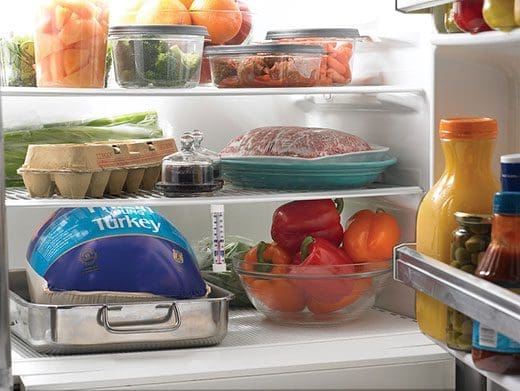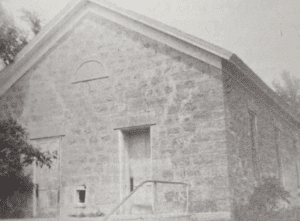K-State Research and Extension news service
Manhattan, KS — Keeping food safe during a power outage begins well before winter storms hit, said Kansas State University food scientist Karen Blakeslee.
Before the power goes out, Blakeslee advised keeping an appliance thermometer in the refrigerator and freezer. According to guidelines from the U.S. Food and Drug Administration, the temperature inside the refrigerator should be 40 degrees Fahrenheit or lower, and the freezer at 0 F or below.
Blakeslee, who also is coordinator of K-State’s Rapid Response Center for food safety, said having a thermometer in place before the power goes out helps to assure the appliance temperature does not stray outside the recommended range.
It may also be a good idea to stock up on canned and non-perishable goods.
“Dried foods, such as fruit and crackers, are great for snacks,” Blakeslee said. “Keep foods that family members enjoy, but also healthful foods to provide nutrient-dense nourishment.”
Blakeslee recommends storing pantry foods in a cool, dry, dark location.
When power is first lost, leave the door of the refrigerator and freezer closed to preserve cold temperatures as long as possible. If the power stays out for a longer period of time and the refrigerator is not staying cold, Blakeslee has some additional ideas for protecting food.
“Coolers filled with ice are very helpful in an emergency,” Blakeslee said. “Make sure ice surrounds the food for the best chilling effect.”
For food in the freezer, dry ice can be used if available – but thick gloves should always be worn when handling dry ice to prevent skin damage. Dry ice should then be kept in a ventilated area.
Food spoilage may be unavoidable if the power outage is lengthy. Blakeslee outlines key factors that may be an indication of foodborne illness:
- Color changes.
- Unusual odors.
- Texture changes.
The most susceptible foods are meat, dairy, eggs and cut fruits and vegetables. Extra care should be taken when examining these food items.
“Don’t taste any questionable food that has thawed out,” Blakeslee said. “When in doubt, throw it out.”
If a power outage lasts more than four hours at temperatures greater than 40 F, refrigerated or frozen food kept without another cold source should be thrown out.
For more information on food safety during the power outages, Blakeslee recommends consulting the U.S. Centers for Disease Control and Prevention webpage.
Blakeslee publishes a monthly newsletter called You Asked It! that provides numerous tips on being safe and healthy. More information is also available from local extension offices in Kansas.













